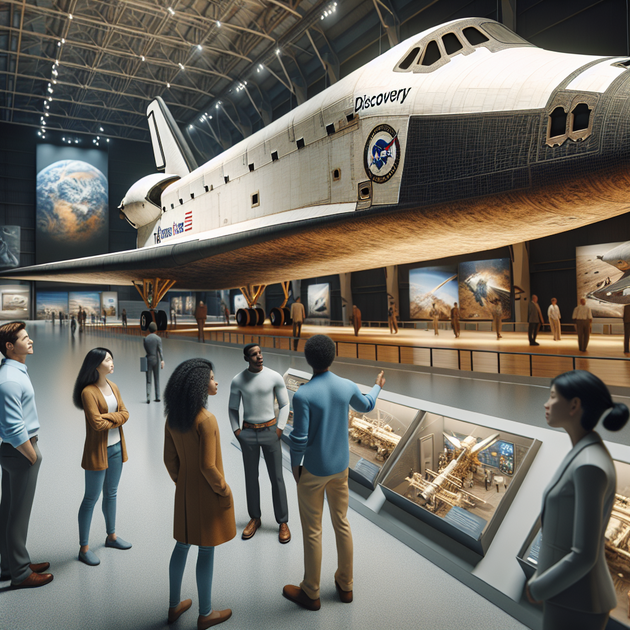Have you ever wondered what it actually takes to move a giant space shuttle like Discovery? Well, here’s a fact that might surprise you: experts say the ONLY way to relocate this legendary orbiter is by chopping it up first—and that has some folks at the Smithsonian seriously worried about losing a piece of history.
Why Is Moving the Space Shuttle Discovery So Difficult?
When we see photos of shuttles parked in museums or rolling down city streets on flatbeds, it’s easy to assume they’re just really heavy trucks. But moving a full-sized orbiter like Discovery isn’t anything like hauling furniture. The shuttle is enormous—about 122 feet long with a wingspan wider than some houses—and it was never designed with “easy transport” in mind.
The main problem? It won’t fit through most doors or roads without major disassembly. According to reports sent all the way up to the White House, the only practical way to “move Discovery” would be by cutting it into sections.
Smithsonian’s Warning: Dismantling Means Losing History
The Smithsonian National Air and Space Museum currently houses Discovery and knows more than anyone how valuable—and fragile—space artifacts can be. Their experts have sounded an alarm about this relocation plan. Why? Because taking apart a historic spacecraft like this isn’t like unscrewing IKEA shelves; every bolt and panel tells part of its story.
Here’s what’s at risk if we chop up Discovery:
- Loss of Original Material: Once cut up and reassembled, some pieces may never fit back exactly right.
- Damage from Handling: Many parts are delicate after years on display; moving them could cause cracks or breaks.
- Historical Integrity: Even careful restoration can never fully recapture the original craftsmanship.
- Public Perception: Visitors might not see “the real thing”—just an expertly rebuilt model.
The Real-World Challenge of Moving Massive Artifacts
To put this in perspective, let me tell you about an experience I had visiting Kennedy Space Center. There’s a Saturn V rocket there—a beast even bigger than the shuttle—that required custom buildings just for visitors! Moving something that size took years of planning (and millions of dollars).
Discovery faces similar challenges but with an added twist: people have deep emotional attachments because it actually flew in space. Every scratch tells a story.
If Not Dismantling…Then What?
So what are the alternatives? The truth is there aren’t many good options if you want to keep everything intact:
- Transport whole by barge or air: Incredibly expensive and logistically next-to-impossible due to size and weight restrictions.
- Build new infrastructure: Think wider doors or new roads—hugely disruptive and costly.
- Virtual relocation: Use digital models or VR so people everywhere can “visit” without moving the real thing.
Most museums—including the Smithsonian—prefer leaving historic vehicles right where they are for these reasons.
The Big Question: Should We Ever Move Discovery?
This debate isn’t really about logistics—it’s about what we value more as a society. Do we want more people around the country (or world) seeing these incredible machines up close? Or should we do everything possible to preserve their authenticity—even if it means fewer people have access?
It’s a tricky balance between sharing our technological achievements and protecting our shared heritage for future generations.
So here’s my question for you: If you were in charge, would you risk dismantling something as iconic as the space shuttle just so more people could see it? Or does preserving every inch of history matter most?

Leave a Reply